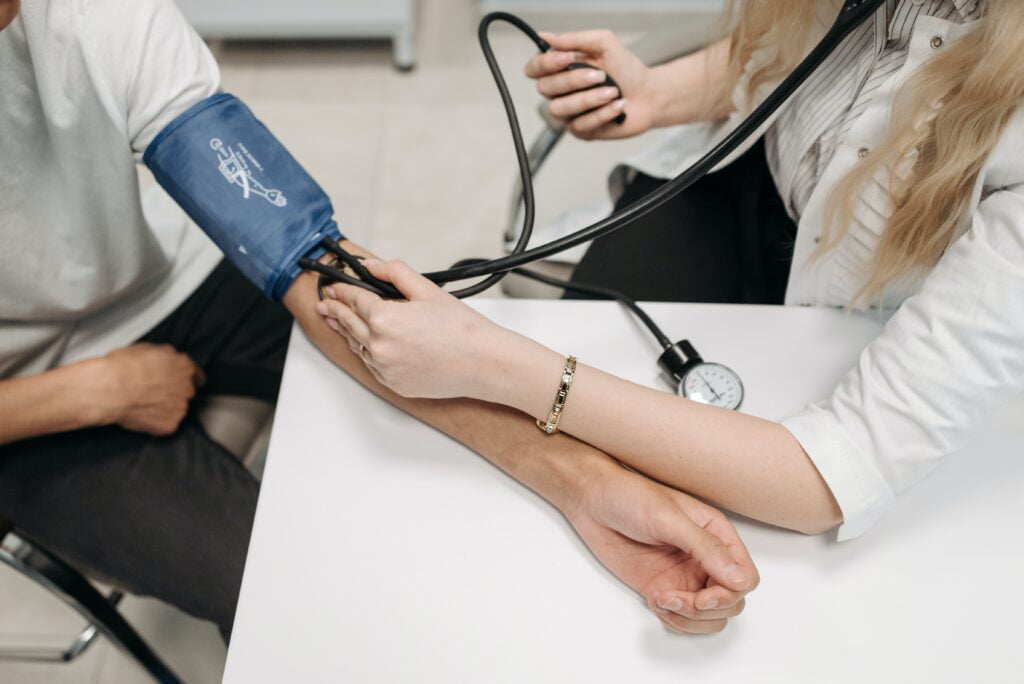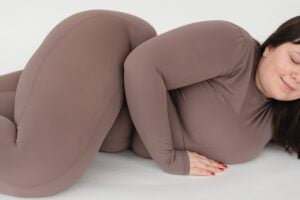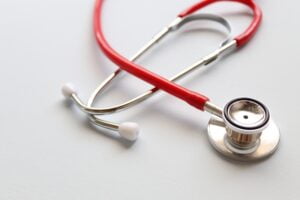Introduction
In the fast-paced lives of modern America, health often takes a back seat until it raises its voice in the form of alarming symptoms. Blood pressure, a vital marker of cardiovascular health, is a prime example. Understanding the symptoms and underlying causes of blood pressure fluctuations is not only crucial for personal well-being but also for the overall health of the nation. So, let’s embark on a journey through the intricacies of blood pressure, tailored for the eyes of Americans.
Recognizing the Silent Signals of Blood Pressure
Blood pressure often earns its moniker as the “silent killer” due to its stealthy nature. Many individuals with high blood pressure, or hypertension, might not experience noticeable symptoms initially. However, some subtle indicators might include persistent headaches, shortness of breath during physical activities, dizziness, or nosebleeds. While these symptoms can be attributed to various factors, they should serve as prompts for closer monitoring and seeking medical evaluation.
Exploring American Lifestyle Influences
The American way of life, characterized by convenience foods, desk jobs, and urban hustle, can inadvertently contribute to high blood pressure. Unhealthy dietary habits, excessive sodium intake from processed foods, sedentary routines, and high-stress environments are often the culprits. The prevalence of fast food chains and the culture of “work hard, play hard” can create a perfect storm for hypertension to take root.
Genetic Predisposition in American Diversity
In the diverse melting pot that is the United States, genetics play a significant role in blood pressure predisposition. This emphasizes the importance of understanding one’s family history and ethnicity to gauge potential risks accurately.
The Aging Puzzle
As the years go by, blood pressure tends to increase. This natural aging process can be exacerbated by unhealthy lifestyle habits. It becomes essential, especially for American seniors, to maintain regular health check-ups and adhere to heart-healthy practices to mitigate the effects of aging on blood pressure.
Obesity: America’s Health Challenge
Obesity, an epidemic sweeping the nation, is intrinsically linked to high blood pressure. The United States struggles with weight-related issues due to factors like poor diet, lack of exercise, and sedentary work cultures. Every pound gained places additional strain on the heart and blood vessels, underscoring the need for a comprehensive approach to weight management.
Diving into Data: The Role of Chronic Conditions
Chronic conditions like diabetes, kidney disease, and sleep apnea are common companions of hypertension. The United States faces a significant diabetes epidemic, which, coupled with hypertension, forms a dangerous duo that demands diligent management.
Alcohol and Tobacco: Shadows of Blood Pressure
In a nation where socializing often involves alcohol and where tobacco usage remains a concern, the impact on blood pressure cannot be ignored. Smoking damages blood vessels, while excessive alcohol consumption raises blood pressure. Recognizing and addressing these habits is a pivotal step towards better cardiovascular health.
Understanding Normal Blood Pressure: A Key to Cardiovascular Health
Blood pressure is a fundamental metric that provides valuable insights into the health of our cardiovascular system. It serves as a crucial indicator of how effectively our heart pumps blood and how well our arteries are able to carry it throughout the body. In this article, we delve into the concept of normal blood pressure, demystifying its significance and shedding light on the numbers that define a healthy cardiovascular state.
The Two Numbers: Systolic and Diastolic
When you have your blood pressure measured, you’ll often hear two numbers mentioned: systolic and diastolic pressure. These numbers represent different aspects of your heart’s pumping cycle.
Systolic Pressure (Top Number): This number indicates the pressure within your arteries when your heart contracts and pumps blood. It’s the force exerted on your artery walls when your heart is actively pushing blood out.
Diastolic Pressure (Bottom Number): This number represents the pressure within your arteries when your heart is at rest between beats. It’s a reflection of the residual pressure in your arteries during the resting phase of your heart’s cycle.
Defining Normal Blood Pressure
A normal blood pressure reading is typically expressed as a ratio of the systolic pressure over the diastolic pressure. The universally accepted normal blood pressure range is around 120/80 mmHg.
Systolic Pressure: Ideally, your systolic pressure should be below 120 mmHg. This reflects the pressure exerted on your artery walls when your heart contracts.
Diastolic Pressure: Your diastolic pressure should be below 80 mmHg. This indicates the pressure in your arteries during the resting phase of your heart’s cycle.
The Importance of Normal Blood Pressure
Maintaining a normal blood pressure range is essential for your cardiovascular health. Here’s why it matters:
Heart Health: Within the normal range, your heart doesn’t need to work harder than necessary to pump blood. This reduces the strain on your heart and lowers the risk of heart-related issues.
Artery Health: Normal blood pressure ensures that your arteries remain strong and flexible. Consistently high blood pressure can damage your artery walls, making them more susceptible to plaque buildup and narrowing.
Stroke Prevention: Elevated blood pressure significantly increases the risk of strokes. Keeping your blood pressure in check lowers your risk of experiencing a stroke.
Kidney Function: Your kidneys play a role in regulating blood pressure. Normal blood pressure helps maintain healthy kidney function.
Monitoring Your Blood Pressure
Regular monitoring of your blood pressure is crucial, especially if you have risk factors like a family history of hypertension, an unhealthy diet, a sedentary lifestyle, or certain medical conditions. You have the option to monitor your blood pressure at home using a digital blood pressure monitor or schedule regular check-ups with a healthcare professional.
Exploring Orthostatic Hypotension: When Blood Pressure Takes a Dip
Orthostatic hypotension, also known as postural hypotension, is a common condition that involves a sudden drop in blood pressure when transitioning from lying down or sitting to standing. This can lead to dizziness, lightheadedness, and even fainting. In this article, we’ll delve into the details of orthostatic hypotension, its causes, symptoms, and how to manage it effectively.
The Role of Gravity When you stand, blood pools in your legs due to gravity. Your body compensates by constricting blood vessels and increasing your heart rate to ensure sufficient blood flow to the brain. In orthostatic hypotension, this compensation is inadequate, resulting in reduced blood supply to the brain temporarily.
Causes and Risk Factors
Underlying Conditions Orthostatic hypotension can be a standalone condition or a symptom of an underlying medical issue. Common causes include dehydration, heart conditions, nerve disorders, and certain medications.
Age and Medications Elderly individuals are more prone to orthostatic hypotension due to age-related changes in blood vessels and nervous system function. Medications such as those for high blood pressure, diuretics, and medications that affect the nervous system can also contribute to the condition.
Recognizing Symptoms
Dizziness and Lightheadedness The hallmark symptoms of orthostatic hypotension include feeling dizzy, lightheaded, or even faint upon standing up.
Blurry Vision Some individuals may experience a temporary blurring of vision or even see spots when they stand.
Fainting In severe cases, orthostatic hypotension can lead to fainting or syncope. This occurs when blood pressure drops significantly, causing a temporary loss of consciousness.
Managing Orthostatic Hypotension
Hydration Staying hydrated is crucial. Dehydration can exacerbate orthostatic hypotension, so make sure to drink enough fluids throughout the day.
Change Positions Slowly To minimize the sudden drop in blood pressure, rise slowly from a lying or sitting position. This gives your body more time to adjust.
Compression Stockings Compression stockings can help prevent blood from pooling in your legs and aid in maintaining blood pressure when standing.
Adjust Medications If medications are contributing to orthostatic hypotension, consult your healthcare provider. They may adjust your medication regimen to alleviate the condition.
When to Seek Medical Attention
While mild symptoms of orthostatic hypotension can often be managed through lifestyle adjustments, severe or persistent symptoms warrant medical attention. If you experience frequent fainting, chest pain, confusion, or if symptoms worsen, consult a healthcare professional.
For Americans, understanding blood pressure symptoms and causes isn’t just a matter of personal well-being; it’s a call to revolutionize the nation’s health landscape. By being attentive to potential symptoms, embracing heart-healthy lifestyles, and advocating for systemic changes, each individual contributes to a healthier America. As the country continues to embrace diversity and innovation, let’s ensure that good health is a cornerstone of this dynamic nation’s identity. After all, the rhythm of America’s heartbeat should resonate with vitality, longevity, and a shared commitment to cardiovascular well-being.
If you like to read my other articles, please follow: Unlocking the Power of a Healthy Mind: Essential Strategies in 2023





2 thoughts on “The Maze of Blood Pressure: Unraveling Symptoms and Causes for Americans in 2025”